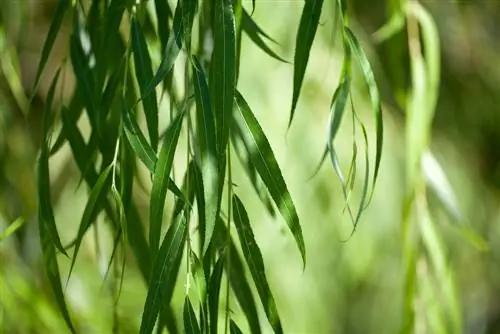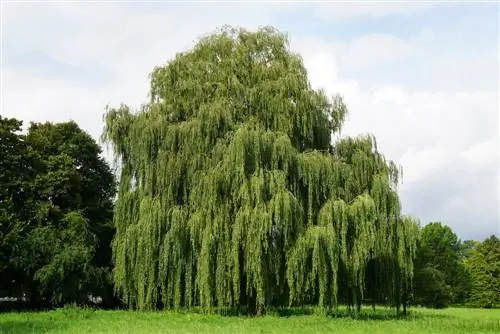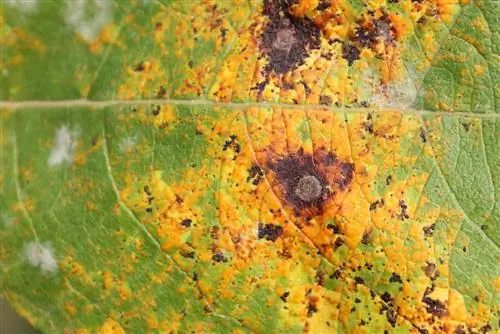- Author admin [email protected].
- Public 2023-12-25 17:45.
- Last modified 2025-01-23 11:21.
The weeping willow immediately catches the eye with its drooping branches. The narrow leaves on the branches look like a pompous dress. In this way, the deciduous tree can be easily distinguished from other willow species. But could you identify the weeping willow just by its leaf? In this article you will learn more about the special properties of the leaves of the weeping willow. You will also receive valuable tips on how you can use leaves for your own garden.

What do the leaves of the weeping willow look like and are they poisonous?
The leaves of the weeping willow are lanceolate, 8-16 cm long, 0.8-1.5 cm wide, have a serrated edge and are deep green on the upper side and gray-green on the underside. They are rich in tannins and salicin, which has antipyretic and pain-relieving effects.
Features
- Leaf arrangement: alternate
- Leaf shape: lanceolate
- Leaf edge: sawn
- Length: 8-16 cm
- Width: 0.8-1.5cm
- pointed
- Color of the top of the leaves: deep green
- Color of the underside of the leaf: gray-green
- hairless
- fine mesh pattern visible
- wedge-shaped base
- Length of petiole: 3-5 mm
Location
So that the leaves receive enough light for photosynthesis, the weeping willow must be placed as sunny as possible. The conversion of oxygen, water and sunlight into glucose is essential for such a large tree to be self-sufficient.
Leaves dropping in autumn
The weeping willow is a deciduous deciduous tree. It loses its leaves in autumn. Given the sprawling crown, it's no wonder that mountains of leaves pile up in the garden at this time of year. But you don't necessarily have to remove these. They serve as compost for the tree. In this way you can enrich the soil naturally. It is only necessary to collect leaves and dispose of them in organic waste if there is a disease infestation.
Are the leaves of the weeping willow poisonous?
If you have a pet or have small children in your household, it certainly matters to you whether a plant you plant in the garden contains toxic substances. With the weeping willow, especially its leaves, you don't have to worry that the animal or your child will suffer he alth problems if they taste the tree. The weeping willow is completely non-toxic.
Importance for medicine
On the contrary, the leaves of the weeping willow contain a high proportion of tannins and salicin. You probably know the latter ingredient from aspirin tablets. It has a fever-reducing, pain-relieving effect. If you have mild symptoms, it helps to chew on the leaves. But be careful, the herbal medicine has a very bitter taste.






